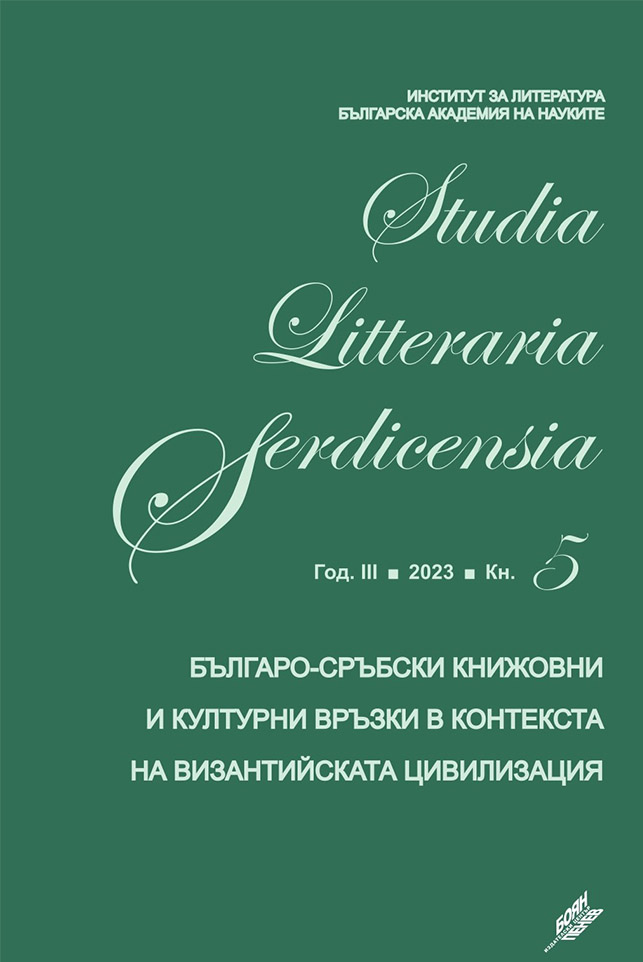The South Slavic translation of the complete version of the Capita de temperantia et virtute (CPG 7862) is attested in more than 40 Bulgarian, Serbian, Russian and Moldavian-Wallachian manuscripts, the earliest from the opening decades of the 14th century. Text-critical research shows two translations (Middle Bulgarian and Serbian from Mount Athos) and one revision of the first translation. Translations circulate from Paroria and Veliko Tarnovo to Mount Athos, to the monasteries of Manasia and Ravanitsa. The ascetic collections in which it is placed are composed of works by Mark the Hermit (4th–5th c.), John the Carpathian (5th c.), John of the Ladder (579–649), Evagrius of Pontus, Nile of Sinai (345–430), and later in compositions together with Diadochus of Photiki (c. 400–c. 486), Thalassius of Libya (c. 590–660), Simeon the New Theologian (949–1022), Nikitas Stetates (1005 – c. 1090), Maximus the Confessor (580–662); after 1340 works by Gregory the Sinaite (c. 1275–1347) are included. The history of the Capita de temperantia in Slavic translation is largely connected with the history of Balkan ascetic literature. I am very grateful for the cooperation of the Hilandar Research Library at The Ohio State University and to the Monks of Hilandar Monastery for giving me the opportunity to work with manuscript copies.
THE TRANSLATION OF CAPITA DE TEMPERANTIA ET VIRTUTE BY HESYCHIUS SINAITE IN BALKAN MANUSCRIPT TRADITION
-
YEAR: КНИГА 5PUBLISHED ON :
PUBLISHER: INSTITUTE FOR LITERATUREISSN (Print): 2738-7631ISSN (Online): 2815-2999
-
-

- NAME: Anissava Miltenova
- INVERSION: Miltenova, Anissava
- E-MAIL: [email protected]
- INSTITUTION: Institute for Literature – Bulgarian Academy of Sciences
- COUNTRY: Bulgaria
- ORCID: 0000-0003-1731-3639
Anissava Miltenova, Prof. DSc, Department of Old Bulgarian Literature, Institute of Literature at Bulgarian Academy of Sciences, Emerita. Fields of research: medieval studies, history of Slavic medieval literature, monastic literature, historical-apocalyptic literature, apocryphal literature, computer analysis of Slavic manuscripts.
-
-
 ABSTRACT
ABSTRACTThe South Slavic translation of the complete version of the Capita de temperantia et virtute (CPG 7862) is attested in more than 40 Bulgarian, Serbian, Russian and Moldavian-Wallachian manuscripts, the earliest from the opening decades of the 14th century. Text-critical research shows two translations (Middle Bulgarian and Serbian from Mount Athos) and one revision of the first translation. Translations circulate from Paroria and Veliko Tarnovo to Mount Athos, to the monasteries of Manasia and Ravanitsa. The ascetic collections in which it is placed are composed of works by Mark the Hermit (4th–5th c.), John the Carpathian (5th c.), John of the Ladder (579–649), Evagrius of Pontus, Nile of Sinai (345–430), and later in compositions together with Diadochus of Photiki (c. 400–c. 486), Thalassius of Libya (c. 590–660), Simeon the New Theologian (949–1022), Nikitas Stetates (1005 – c. 1090), Maximus the Confessor (580–662); after 1340 works by Gregory the Sinaite (c. 1275–1347) are included. The history of the Capita de temperantia in Slavic translation is largely connected with the history of Balkan ascetic literature. I am very grateful for the cooperation of the Hilandar Research Library at The Ohio State University and to the Monks of Hilandar Monastery for giving me the opportunity to work with manuscript copies.
SUBJECT

